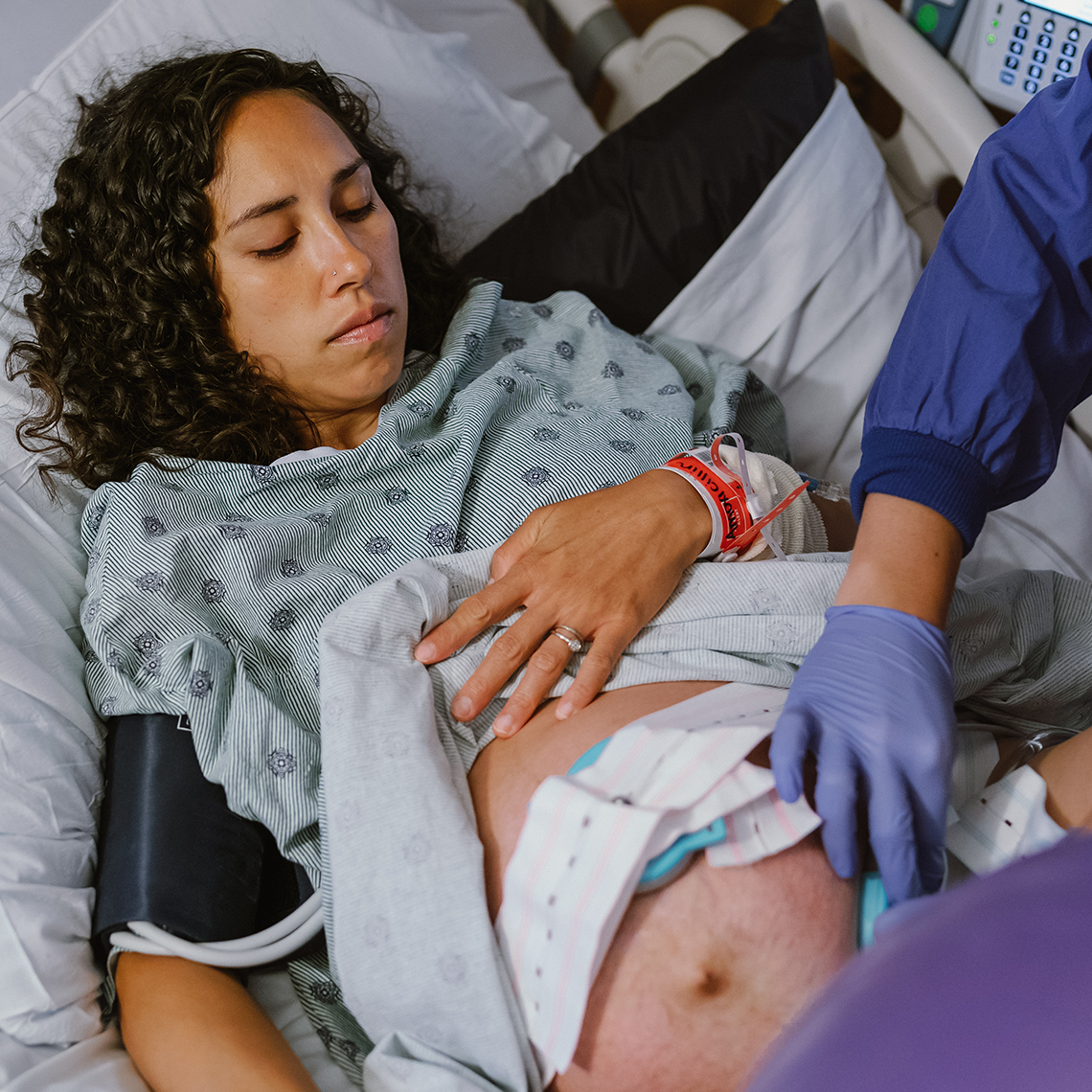Podcast
A Forgotten Stent and Unclear Responsibility for Follow Up
Apr 02, 2020

Commentators
- Adam Schaffer, MD
Transcript
[Patient:]
I didn’t think this was a big surgery. I knew there were risks. But then I have a year of trouble from it. Procedure after procedure. They literally forgot they left something in my body…and I wound up in the emergency room before they took it out.
[Narrator]
A 38-year-old male in relatively good health was admitted to the hospital by his oncology surgeon for removal of a large hemangioma on his liver. Four days after an uneventful left hepatectomy, the patient was discharged home with a surgical drain in place.
Beginning a week later, and over the course of the next 12 months, he would return several times with complaints of pain and drainage issues. After one ED visit, when imaging studies revealed a right upper quadrant fluid collection, interventional radiology placed a drain. Soon after that, an MRI revealed a stricture in the right hepatic lobe. The patient’s gastroenterologist placed a biliary stent to facilitate drainage, with a plan to remove it 6-8 weeks later. Four months after that, his oncology surgeon operated again to improve the drain placed by the interventional radiologist. During that procedure, he discovered and fixed a biliary bile duct leak.
Even though the oncologist performed yet another surgery in the same area after that, with several follow-up visits by the patient, nobody removed the biliary stent that the gastroenterologist had placed earlier. The plan had been to remove it after 6-8 weeks. Instead, it was only after 13 months—when the patient arrived in the ED with fever and chills—that a CT scan revealed the indwelling biliary stent was still in his common bile duct and was infected. This required another surgery to remove the infected stent.
The patient sued his oncologist and the hospital, alleging that they mismanaged his post-operative recovery, leading to complications that required additional surgery. The case was settled in the low range.
Joining us now to talk about the risk management and patient safety aspects of this case is Dr. Adam Schaffer. Dr. Schaffer is Senior Clinical Analytic specialist at CRICO and a hospitalist at Brigham and Women’s Hospital in Boston.
Q.) Thank you for joining us, Adam.
A.) Thank you for having me, I appreciate the opportunity to discuss this case.
Q.) As you think about the fact pattern in this case, is there sort of a main overriding issue right off the top?
A.) Yeah, the main overriding issue I see here is diffusion of responsibility. All of the involved clinicians, no doubt acting in good faith, assumed that someone else on the care team would ensure that the biliary stent was removed. The net result of this was that no one felt they really had the primary ownership of the issue, and so no one followed through to make sure that the stent was actually removed. This brings up the importance of closing the loop when it comes to patient safety. Mechanisms for clear communication among the involved providers could have potentially prevented the failure to remove the biliary stent that occurred in this case.
Q.) Yes, and closing the loop has been the subject of a lot of our work here at CRICO. Are there some mechanisms that people can start to use to systematize that and ensure that closing the loop is a reliable process?
A.) Yeah, absolutely. As I mentioned, communication among the involved providers could have potentially prevented the failure to remove the biliary stent. First, there should be agreement and policies in place about who is responsible for ensuring that the follow-up appointment for removal of the biliary stent is made. Especially in a higher volume center, this should not be done on an ad hoc basis such that providers try to figure it out with each patient. Instead, there needs to be an established procedure, whether that is the office of the gastroenterologist who placed the stent or arranges for the follow-up, or that it is handed off to the PCP with the system in place to have the PCP’s office confirm that they are taking responsibility for this. That is, as you said, the loop needs to be closed and you need to have clear documentation that the loop has been closed.
Q.) And that makes sense but what we see a lot of times in a lot of our cases is that providers don’t have reliable systems, the support in a system for making sure that that happens and make sure the follow-up happens effectively.
A.) Yeah, systems level approaches to issues like this are clearly what is needed. In this case I see a number of advantages to the gastroenterologist taking primary responsibility for ensuring that the stent is removed. One is that the gastroenterologist is the clinician who will typically be removing the stent. Two, a patient may not have a PCP or the PCP may be part of a different health care system, and so these can be barriers to trying to assign this role to the PCP. I have seen some patient safety plans that look great on paper but having a PCP within the system is a linchpin. So these programs are less effective when they are implemented and come up against the reality that many patients may not have a PCP or may not have a PCP within the same system. Also, the responsibilities of PCPs seem to be inexorably expanding, and so when you can take something off the plate of the PCP, then we should seriously consider doing this.
Q.) Right, so are there mechanics or other systems that will help the PCPs and the gastroenterologists or the specialists in any case sort of know or have that in a system where it’s not really dropped?
A.) So as the CRICO IHI report on closing the loop notes, well-designed EHR systems can be a tool to avoid medical errors such as this. EHRs can have lists of issues requiring follow up with indications for who is taking responsibility for following any given issue up, such as the removal of a biliary stent. If the specialist assigns responsibility for follow-up with their PCP, there needs to be a way for the specialist to know whether or not the PCP has accepted this responsibility. It’s great for the PCP to get like an email saying, ‘Dr. Smith has said you will take responsibility for following up the stent and arranging the appointment,’ but we can’t be sure that the PCP gets it and is he really accepting that responsibility? So you want to have that closed loop communication so that it’s clear which doctor has responsibility for making sure that follow-up occurs.
Q.) Are there any other systems that can help physicians and practices make sure this follow-up happens?
A.) One system that I consider very promising to avoid errors such as this is the use of registries in conjunction with patient navigators. This is an approach that I’m very excited about, and I think this is going to be one of the waves of the future that we see as a really great systems approach to enhancing patient safety when it comes to follow-up issues. So by way of background, Dr. Sonali Desai and other Brigham colleagues have done tremendous work on the use of registries as part of safety net programs.
So the way it works is these safety net programs are designed to form a backstop so that issues needing follow up do not fall through the cracks. Dr. Desai has shown benefits from this program when applied to another more common GI endoscopic procedure, colonoscopy. With colonoscopy, the issue that we need to ensure does not fall through the cracks is not removable of a stent, but instead the need for repeat colonoscopy. Depending on the findings of the initial colonoscopy, which can include precancerous colon polyps, repeat colonoscopy may be needed at variable time intervals. Keeping track of when repeat colonoscopy needs to be performed, making sure the appointment for this repeat colonoscopy gets scheduled, is what the safety net system is designed to do.
This is similar to the issue at hand with this case. There was follow-up needed after a GI endoscopic procedure, in this case ERCP rather than colonoscopy, and this follow up did not occur. Building on the system being implemented for colonoscopy, one can envision that once the stent is placed as part of the ERCP procedure, this triggers a notification of the registry, and the gastroenterologist designates when the stent should be removed. The officials who run the registry then take responsibility for notifying the patient that they need to make an appointment for stent removal. This eliminates the element of diffusion of responsibility, since the registry is the one who takes responsibility, rather than in some cases the gastroenterologist or in other cases the PCP or maybe in some cases the surgeon. Dealing with the need for this follow up in an ad hoc way is going to lead to higher failure rates. It is worth noting that since this registry is being developed for use in making sure necessary follow-up colonoscopy occurs, it would not take that much more additional resources to also apply this to a different GI procedure which occurred in this case, which is ERCP.
Q.) Well thank you, Dr. Adam Shaffer, Senior Clinical Analytic Specialist for CRICO and a hospitalist at Brigham and Women’s Hospital. I’m Tom Augello.
About the series
Even in the safest healthcare setting, things can go wrong. For more than 40 years, CRICO has analyzed MPL cases from the Harvard medical community. Join our experts as they unpack what occurred and the lessons learned for safer patient care from the causes of these errors.
Episodes
Bad Finger, Good Documentation

Battery in Toddler’s Nose Missed at First

A Pending Test at Discharge and a Return with Sepsis


